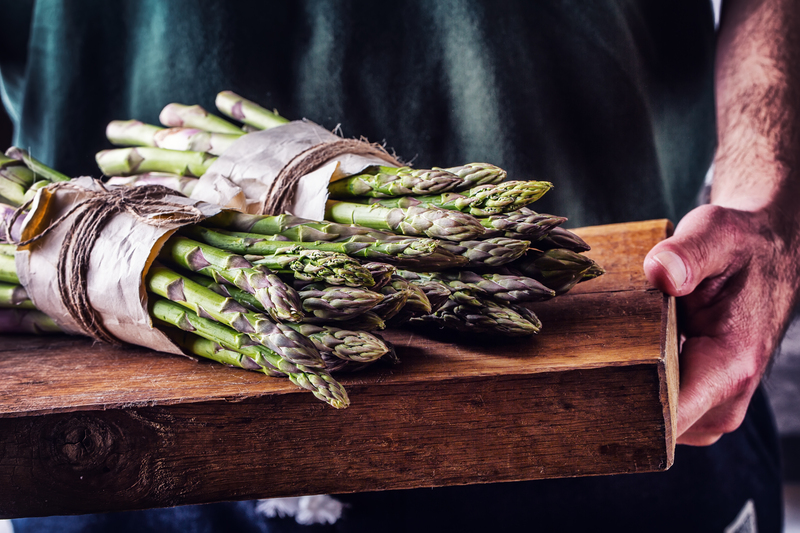Optimal Moments for Fertilization Prep
Posted on 26/04/2025
Fertilization is a critical component in agriculture and horticulture, playing an instrumental role in achieving robust plant growth and high yield. However, the effectiveness of fertilization is significantly influenced by the timing of its application. Understanding the optimal moments for fertilization prep ensures that nutrients are available to plants when they need them the most, maximizing both efficiency and productivity. This article explores the various critical periods for fertilization, drawing on agronomic principles and practical insights to outline the best moments for nutrient application.
Understanding Plant Nutrient Requirements
Plants require various nutrients throughout their growth cycles, such as nitrogen (N), phosphorus (P), and potassium (K), often referred to as macronutrients, as well as essential micronutrients like iron, manganese, and zinc. Each of these nutrients plays a specific role in plant development:
- Nitrogen: Essential for leaf growth and photosynthesis.
- Phosphorus: Crucial for root development and energy transfer within the plant.
- Potassium: Important for overall plant health, including disease resistance and water regulation.
- Micronutrients: Various roles depending on the specific element, including enzyme function and chlorophyll production.
Different stages of a plant's lifecycle--from seedling to maturity--demand different nutrient focuses. Therefore, the timing of fertilization should align with the nutrient needs at these various stages.

Pre-Planting Fertilization
One of the first critical periods for fertilization is even before the seeds hit the soil. Pre-planting fertilization involves applying nutrients to the soil before planting crops. This initial application sets the stage for a fertile growing environment. During this time, soils should be tested to identify any deficiencies or imbalances that might hinder plant growth. Based on these results, fertilizers are applied to ensure that the soil has a well-balanced nutrient profile.
Benefits of pre-planting fertilization include:
- Enhanced Seedling Establishment: Young plants are highly vulnerable to nutrient deficiencies, and pre-planting fertilization ensures they have a good start.
- Root Development: Roots form the foundation of nutrient uptake, and early fertilization supports robust root systems.
- Improved Soil Structure: Fertilizers can help break down compacted soils, improving water infiltration and root penetration.
Early Growth Stage
After germination, plants enter the early growth stage, where they focus on developing their shoots and roots. This period is marked by a high demand for nitrogen, which supports rapid leaf development and photosynthesis. Fertilization during this stage often involves side-dressing or top-dressing with nitrogen-rich fertilizers like urea or ammonium nitrate. The goal here is to provide a steady supply of nitrogen to support vigorous early growth, which sets the foundation for future development.
It's also essential to monitor the presence of other key nutrients like phosphorus and potassium, ensuring that young plants are not limited by any deficiency that could stunt growth. Zinc and iron are often needed as well, especially in soils prone to micronutrient deficiencies.
Pre-Flowering and Flowering Stages
As plants transition from vegetative growth to reproductive stages, their nutrient demands shift. The pre-flowering and flowering stages are critical for reproductive success and future yield. During this period, the emphasis often shifts from nitrogen to phosphorus and potassium. Phosphorus is essential for energy transfer and root development, supporting the formation of flowers and fruit. Potassium enhances overall plant health, disease resistance, and water regulation.
Applying a balanced fertilizer with higher phosphorus and potassium content helps:
- Flower Formation: Ensures flowers develop properly and improve pollination success.
- Fruit Set: Encourages the setting of fruits and reduces flower drop, improving potential yield.
- Stress Tolerance: Enhances the plant's ability to withstand environmental stresses like drought and pests.
Fruit Set and Development Stage
Once the plants have successfully flowered and set fruit, their nutrient needs change once again. The fruit set stage requires continued support with phosphorus and potassium, but nitrogen levels need to be carefully managed. Excessive nitrogen can hinder fruit development and lead to poor quality produce. Balanced fertilization becomes paramount, promoting optimal fruit size, sweetness, and overall quality.
During this stage, it's also important to monitor for any symptoms of micronutrient deficiencies. Elements like calcium and magnesium are critical for fruit quality, helping to prevent disorders such as blossom end rot and improve shelf life.
Late Growth and Maturation Stage
As plants approach maturity, the focus shifts to sustaining the health of the plant and ensuring that fruits or grains reach their full potential. Fertilization during this period often involves reduced nitrogen application while maintaining phosphorus and potassium levels. The goal is to avoid promoting excessive vegetative growth and instead support the maturation and ripening of the produce.
Benefits of late-stage fertilization include:
- Enhanced Fruit Quality: Proper nutrient management ensures that fruits and grains develop high quality and nutritional content.
- Increased Storage Life: Adequate potassium levels are associated with better storage and shelf life of produce.
- Stress Management: Helps plants deal with the stress of reproduction and ensures they have enough energy reserves for ripening.

Post-Harvest Fertilization
After the harvest, plants enter a recovery phase where they prepare for the next growth cycle. Post-harvest fertilization focuses on replenishing the soil with nutrients that were depleted during the active growing season. This is particularly important for perennial crops and systems where crop rotation is practiced.
By applying fertilizers post-harvest, farmers can:
- Improve Soil Fertility: Replacing lost nutrients helps maintain long-term soil fertility and productivity.
- Enhance Next Season's Growth: Prepares the soil for the next planting cycle, ensuring a good start for new plants.
- Reduce Soil Erosion: Cover crops and fertilization can help prevent soil erosion, maintaining healthy soil structure.
Conclusion
Understanding the optimal moments for fertilization prep is crucial for achieving high-yield and high-quality crops. By aligning fertilization practices with plant growth stages--pre-planting, early growth, pre-flowering, fruit development, late growth, and post-harvest--farmers and gardeners can ensure that plants receive the right nutrients at the right time. Such strategic fertilization not only promotes healthier plants but also contributes to more sustainable and productive agricultural practices.




